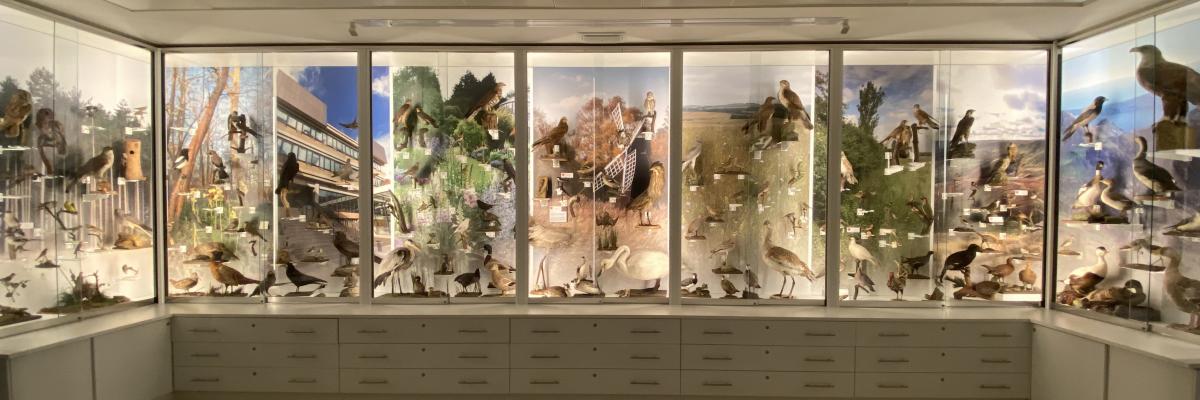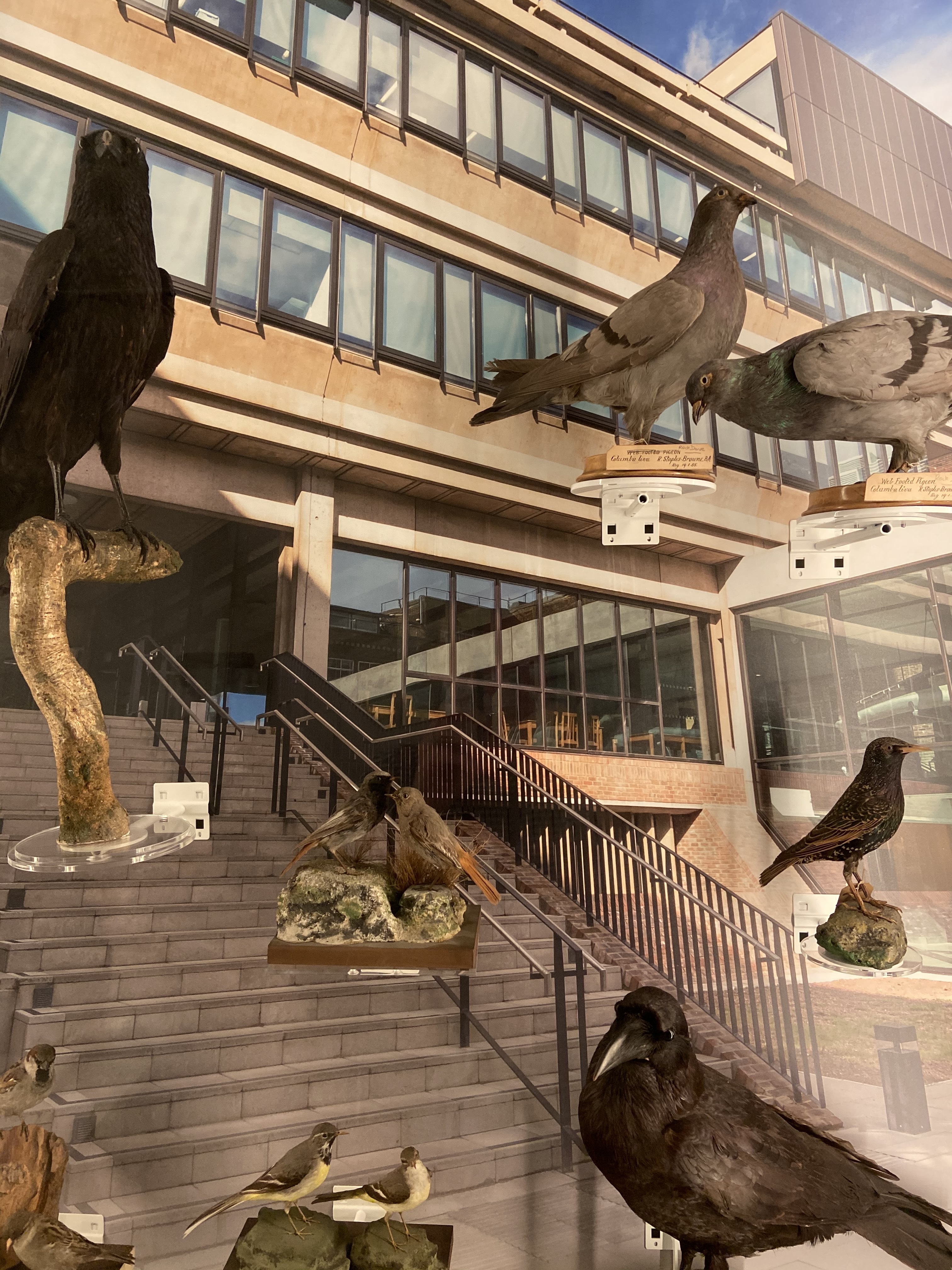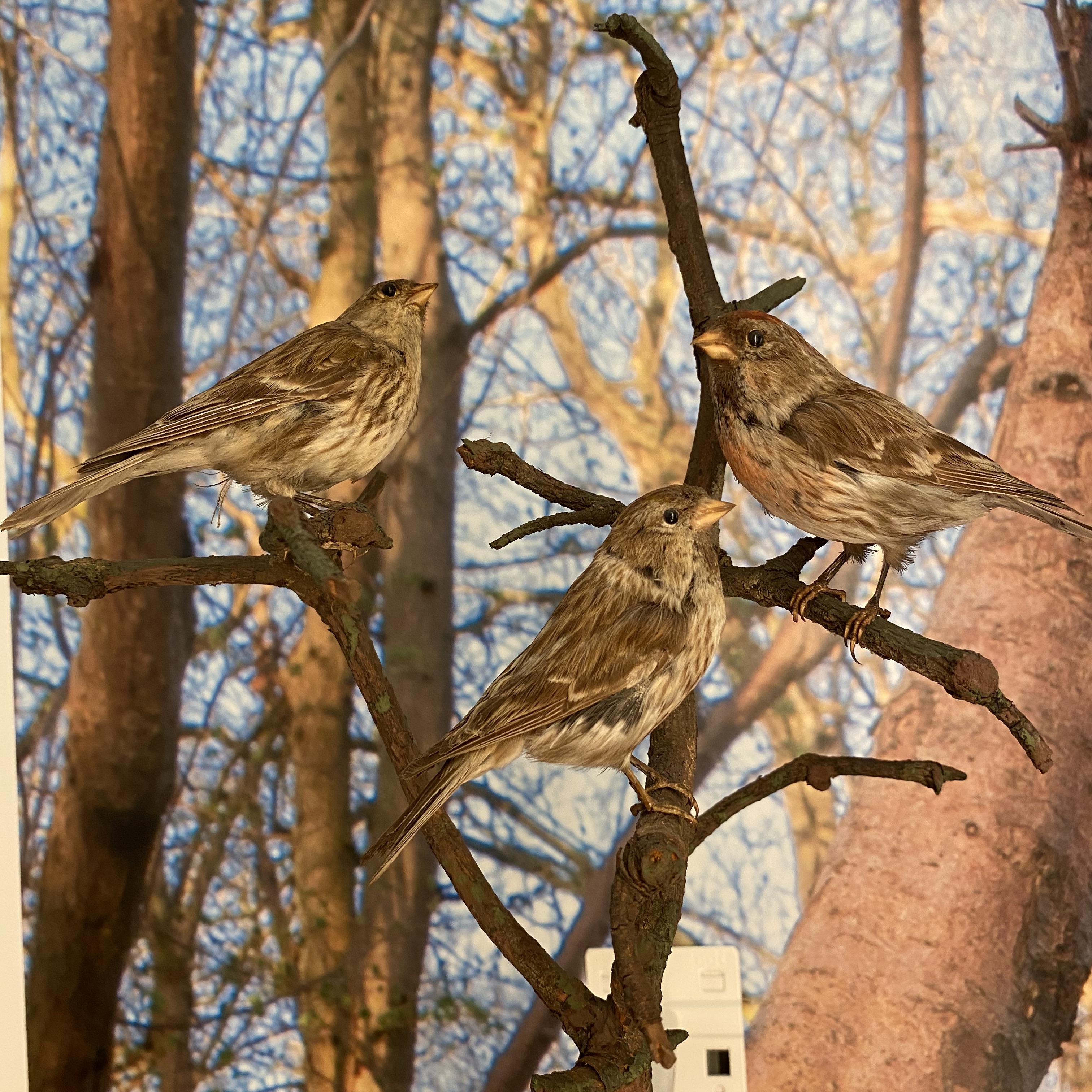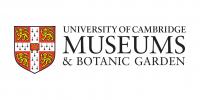
Submitted by Tricia Harnett on Wed, 12/02/2020 - 12:49
On Tuesday 11 February, the Museum of Zoology opened the doors to a brand new gallery, devoted to birds found in the UK. The new gallery explores thirteen British habitats, many of which are near to Cambridge, and the diversity of birds that live in them. Well over 200 taxidermy birds from the Museum’s outstanding collections are going on display. The stories included in the new displays highlight the conservation work currently underway to protect the UK’s incredible bird species.
The bird-filled habitats include Wicken Fen near Ely, which was the first nature reserve owned by the National Trust. It is a unique remnant of undrained fen, a wetland habitat that once covered the lowlands of East Anglia. Wicken Fen is home to over 9000 species, including rare orchids, cuckoos and bitterns. Also featured are the Cambridge University Botanic Garden – which encourages a great diversity of wildlife with its sustainable approach to horticulture – and the Museum’s own building, the David Attenborough Building, which has nest boxes to encourage swifts and bats to roost here in the centre of the City.
The gallery was developed in partnership with conservation organisations, including the British Trust for Ornithology and Royal Society for the Protection of Birds based in the Cambridge Conservation Initiative also in the David Attenborough Building, alongside the National Trust and local Wildlife Trusts.
The gallery not only highlights some of the birds currently at risk in the UK due to habitat loss, pollution and climate change, but also conservation success stories such as the red kite and the white-tailed sea eagle. With a wingspan of nearly 2.5 metres, sea eagles are the largest birds-of-prey in the UK, but were once extinct here. Both of these species are happily growing in numbers after recent reintroductions.
The Museum’s Director, Professor Rebecca Kilner says, “The Museum is dedicated to sharing the wonders of biodiversity, and we can’t wait to welcome visitors to our new British bird gallery. The new displays showcase the vital conservation work taking place across the UK – and here in Cambridgeshire – to protect birds and the places where they live”.
The University Museum of Zoology, Cambridge is one of the largest and most important natural history collections in the UK, with an extraordinarily rich history dating back to 1814. In 2018 the Museum reopened after a five-year, £4.1million redevelopment – including nearly £2 million from The National Lottery Heritage Fund – to reveal thousands of incredible specimens from across the animal kingdom, including whales, elephants, a giraffe, giant ground sloth, insects, corals as well as items collected by Charles Darwin. This new gallery is the latest addition to that project.
Anne Jenkins, Director of England, Midlands & East at The National Lottery Heritage Fund, says, “We are lucky to have a diverse range of interesting and important native bird species on our doorsteps. National Lottery players recognise the importance of our wildlife, and it is thanks to them that we are able to support the creation of this new gallery highlighting the incredible stories of the many birds we can encounter across the UK”.
Notes for editors
1. For more information please email Tricia Harnett, Marketing Assistant: pjh202@cam.ac.uk.
2. All images are ©University of Cambridge.
3. The Museum is open to the public every day except Mondays. (Tues to Sat: 10am to 4.30pm. Sun: 12noon to 4.30pm). Admission is free.
4. For more information about the University Museum of Zoology, Cambridge, please visit: www.museum.zoo.cam.ac.uk
5. The Museum on Twitter: http://twitter.com/ZoologyMuseum and Facebook https://www.facebook.com/ZoologyMuseumCambridge/
6. The University Museum of Zoology is embedded within the Department of Zoology, University of Cambridge www.zoo.cam.ac.uk
About The National Lottery Heritage Fund
Using money raised by the National Lottery, we inspire, lead and resource the UK’s heritage to create positive and lasting change for people and communities, now and in the future. www.HeritageFund.org.uk.
Follow @HeritageFundUK on
https://www.facebook.com/HeritageFundUK/
https://twitter.com/HeritageFundUK
https://www.instagram.com/heritagefunduk/
#NationalLotteryHeritageFund
University of Cambridge Museums is a consortium of the eight University Museums and the Botanic Garden, supported by Arts Council England. The consortium includes: Fitzwilliam Museum, Kettle's Yard, Museum of Archaeology and Anthropology, Museum of Zoology, Museum of Classical Archaeology, Whipple Museum of the History of Science, The Sedgwick Museum of Earth Sciences and The Polar Museum. The University's collections are a world-class resource for researchers, students and members of the public representing the country’s highest concentration of internationally important collections, all within walking distance of the City Centre. www.museums.cam.ac.uk







